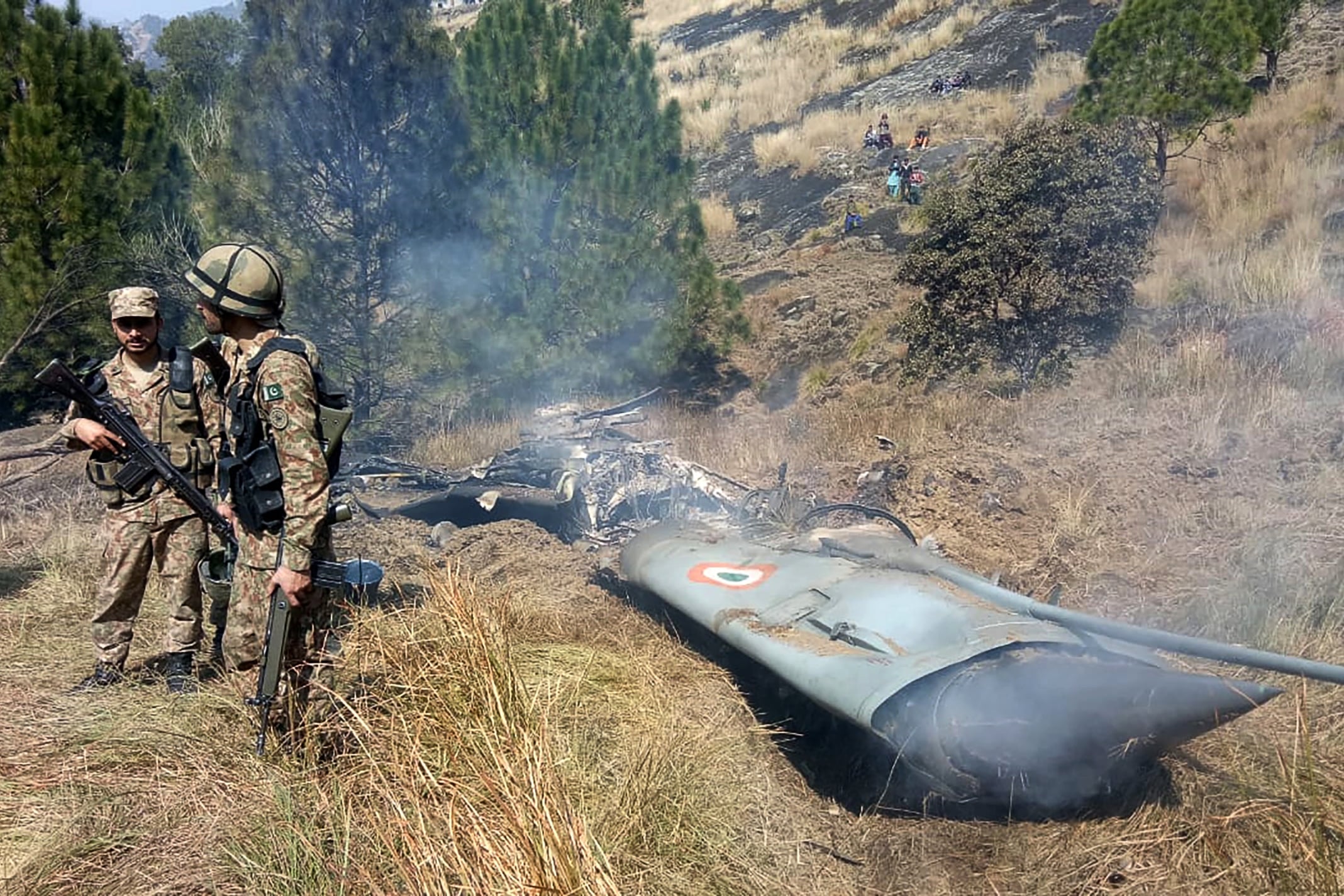Syed Ali Zia Jaffery
The induction of nuclear weapons in South Asia has given primacy to the concept of deterrence in the strategic discourse between arch-rivals, India and Pakistan. Bilateral deterrence between the South Asian dyad has, over the course of two decades, stood the test of crises, including the recent spat following the attack in Pulwama. However, Indian airstrikes across the Line of Control (LoC) with their payloads falling in the precincts of Balakot, have left many people doubting the effectiveness of Pakistan’s nuclear weapons, and also its full-spectrum-deterrence doctrine.
One of the arguments being made regarding the Balakot strikes is this: given that India resorted to punitive military action despite Pakistan’s possession of nuclear weapons, nuclear deterrence was dealt a severe blow. This line of thinking misses some important points and is based on one erroneous assumption. The fact that India chose to cross the Line of Control with a limited aim instead of opening multiple frontages like it did in 1965 or 1971 for that matter, showed that the nuclear overhang played on the minds of Indian strategists.
Glenn H. Snyder, in his book Deterrence and Defense: Toward a Theory of National Security posits that “deterrence is a function of the total cost-gain expectations of the party to be deterred” and says that the aggressor will factor-in all actions of the “deterrer” from the start of the crisis till its termination. Thus, Pakistan (deterrer), with its nuclear weapons, raised the costs for India (aggressor) to expand its offensive operations. It is also reasonable to assert that linking pinpricks on the LoC, be they through ground or air, is predicated on an untenable supposition: nuclear weapons are the be-all and the end-all of Pakistan’s response mix.
Pakistan’s strategic weapons were neither thought to be bulwarks against a four-minute air intrusion nor constitute its retaliatory war-withal. Pakistan Air Force (PAF)’s brisk and robust response to Indian act of aggression, the very next day, re-established deterrence and reinforced redlines, read non-nuclear. The air duel between India and Pakistan amplified the fact that mutual vulnerability, something that happens to be one of the hallmarks of deterrence, was conspicuous in the conventional realm. A strong conventional deterrence equation only adds strength to strategic deterrence, while making catastrophic deterrence failure mighty difficult.
If military history is anything to go by, then the impact of nuclear weapons on escalation control during this crisis is too glaring to ignore. The choice of targets by both, India and Pakistan, was diametrically different as compared to what both sides chose in 1971. India launched a full-fledged attack on multiple sectors in East Pakistan in November 1971 only to be followed by Pakistan’s strikes on Indian airbases. Nothing of that sort happened last month, fearing escalation and accounting for the presence of nuclear weapons. The fact that the aggressor (India) did not mount a deep thrust, the deterrer’s (Pakistan) overall deterrence remained intact. The retaliatory strike by the PAF amply demonstrated that India’s breach will not be accepted as something that India calls the “new normal.”
Insofar as Pakistan’s full spectrum deterrence is concerned, the Balakot attack is instructive. Islamabad’s full-spectrum deterrence came to the fore in response to India’s incessant toying with ideas of limited war under the nuclear umbrella. India came up with a limited war doctrine, popularly known as the Cold Start. The doctrine envisaged that India will, after a terrorist attack allegedly perpetrated by Pakistan, swiftly ingress 50-80 kilometers inside Pakistan, capture territory, destroy the war-fighting capability of its armed forces and compel Pakistan to rein-in anti-India elements who allegedly carry out terrorism against India. It was because CSD threatened Pakistan’s spatial and military thresholds, that Pakistan introduced tactical nuclear weapons in its arsenal. While many have attributed this decision of Pakistan as hawkish, the country’s strategic managers have termed TNWs as important gap-fillers in Pakistan’s deterrence mix.
After years of dilly-dallying and denial, Indian Army Chief, General Bipin Rawat talked of operationalizing the doctrine. If one takes India’s reading of the Pulwama attack on face value, then it was the kind of scenario that India’s CSD was devised for. The fact that India’s Integrated Battle Groups (IBGs) were not invoked even 12 days after the Pulwama incident is quite telling. India, by its own admission, has had enough of Pakistan crying the nuclear wolf. This merits the question: why the Pulwama attack did not provide India with the pretext to penetrate Pakistan’s defenses, annex territory and pulverize its military and eke out an end to its so-called support for militancy?
Pakistan’s TNWs avowedly act as antidotes to CSD. As a deterrer, Pakistan can take heart from the fact that its TNWs as part of its full spectrum deterrence outlawed India’s activation of its IBGs. The idea of plugging gaps at the lower rungs of the escalation ladder is more about maintaining overall deterrence than stemming violations on the LoC and IB/WB.
Pakistan’s general deterrence was challenged only to be restored the very next day. The kind of aggression committed by India and the response given by Pakistan, highlighted the effectiveness of overarching nuclear deterrence. By all means, the absolute weapon played a role in escalation control. A mere look at the pre-nuclearization engagements between the arch-rivals, is enough to point towards the changes nuclear weapons have brought in the rules of military engagement between them.
It could be argued that the Indian mis-adventurism on February 26 and the response from Pakistan could have resulted in something different if it were not for the presence of nuclear weapons. Certainly, inherent in this viewpoint, is the logic that nuclear weapons are not meant to deter violations and skirmishes at the tactical level. Also, full spectrum deterrence did carry the day for Pakistan because nothing significant happened at the tactical level to put pressure on overall deterrence. Indian efforts to establish a “new normal” were foiled by Pakistan’s conventional riposte. The old normal persists and it is condensed into this : Pakistan’s conventional deterrence will redress slight imbalances while nuclear deterrence will ensure escalation control, and the two taken together, will strengthen overall deterrence.
Syed Ali Zia Jaffery is a Research Associate at the Center for Security, Strategy and Policy Research, University of Lahore.

















